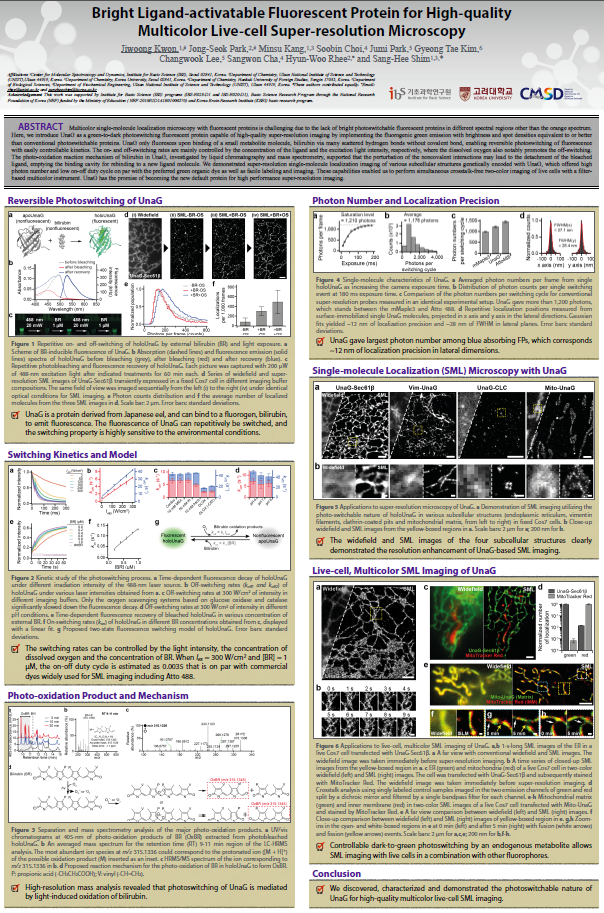mainmenu
Bright Ligand-activatable Fluorescent Protein for High-quality Multicolor Live-cell Super-resolution Microscopy
2019 IBS AOI Conference

Multicolor single-molecule localization microscopy with fluorescent proteins is challenging due to the lack of bright photoswitchable fluorescent proteins in different spectral regions other than the orange spectrum. Here, we introduce UnaG as a green-to-dark photoswitching fluorescent protein capable of high-quality super-resolution imaging by implementing the fluorogenic green emission with brightness and spot densities equivalent to or better than conventional photoswitchable proteins. UnaG only fluoresces upon binding of a small metabolite molecule, bilirubin via many scattered hydrogen bonds without covalent bond, enabling reversible photoswitching of fluorescence with easily controllable kinetics. The on- and off-switching rates are mainly controlled by the concentration of the ligand and the excitation light intensity, respectively, where the dissolved oxygen also notably promotes the off-switching. The photo-oxidation reaction mechanism of bilirubin in UnaG, investigated by liquid chromatography and mass spectrometry, supported that the perturbation of the noncovalent interactions may lead to the detachment of the bleached ligand, emptying the binding cavity for rebinding to a new ligand molecule. We demonstrated super-resolution single-molecule localization imaging of various subcellular structures genetically encoded with UnaG, which offered high photon number and low on-off duty cycle on par with the preferred green organic dye as well as facile labeling and imaging. These capabilities enabled us to perform simultaneous crosstalk-free two-color imaging of live cells with a filter-based multicolor instrument. UnaG has the promise of becoming the new default protein for highperformance super-resolution imaging.


